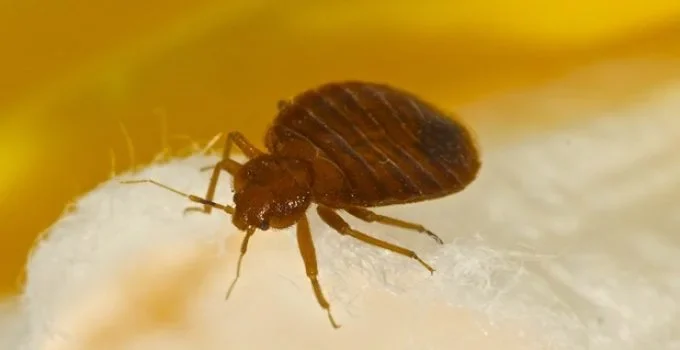You wake up with itchy red marks on your skin—but never saw a single bug. Could it be bed bugs? These pests are infamous for their ability to feed undetected. So let’s get to the core question: Do bed bugs bite?
Yes—bed bugs bite humans to feed on blood, typically at night while you’re asleep. Their bites are painless at the time, but often result in itchy welts, clusters, or lines of red bumps hours later. Though not known to spread disease, bed bug bites can cause significant discomfort, allergic reactions, and even insomnia or anxiety when infestations persist.
Dive Deeper
- 🩺 How Do Bed Bugs Bite?
- 🧛 Why Do Bed Bugs Need to Feed on Blood?
- 🧍 What Do Bed Bug Bites Look Like on Humans?
- 📊 Bed Bug Bite vs. Other Bites: Comparison Table
- 🛡️ How to Avoid Getting Bitten
🩺 How Do Bed Bugs Bite?
Bed bugs bite using a specialized mouthpart called a proboscis, which they insert into the skin to draw blood. This mouthpart consists of two tubes: one injects saliva with anticoagulants and anesthetics to numb the area, while the other draws blood.
Here’s why bites often go unnoticed until later:
- They’re quick feeders, usually done in 3–10 minutes.
- They numb the skin, so you don’t feel the bite.
- They hide immediately after feeding, making them hard to catch in the act.
🧛 Why Do Bed Bugs Need to Feed on Blood?
Unlike many pests that feed on crumbs or garbage, bed bugs are obligate blood feeders—they need blood to survive and reproduce. Both male and female bed bugs feed, as do nymphs (juveniles).
Without blood:
- Nymphs can’t molt to the next stage.
- Adult females can’t lay eggs.
- Bed bugs eventually die of starvation, although they can survive weeks to months without feeding, depending on the life stage and temperature.
They are most active at night and drawn to:
- Body heat
- Carbon dioxide from exhaled breath
- Human skin odor and vibrations
🧍 What Do Bed Bug Bites Look Like on Humans?
While bed bug bites can vary between individuals, they often have distinctive patterns and symptoms:
- Red, raised bumps that may itch or burn
- Clusters or straight lines of 3–5 bites (“breakfast, lunch, and dinner” pattern)
- Delayed reaction—itchiness or swelling may take hours to appear
- Common locations: arms, shoulders, back, neck, legs, and face
Some people do not react at all, which makes infestations hard to detect. Others may develop blisters, hives, or allergic swelling.
📊 Bed Bug Bite vs. Other Bites: Comparison Table
Use this table to help identify whether your bites might be from bed bugs or another pest:
| Feature | Bed Bug Bites | Mosquito Bites | Flea Bites |
|---|---|---|---|
| Time of activity | Night (while sleeping) | Dusk/evening | Day or night |
| Location on body | Exposed areas | Any exposed skin | Usually lower legs/feet |
| Bite pattern | Clusters or lines | Random | Clusters or grouped |
| Pain at time of bite | No | Mild sting | Sharp pain |
| Itchiness/swelling | Often delayed, itchy | Immediate itch | Quick reaction, intense itch |
| Visible bug activity | Rarely seen | May see flying mosquito | Often jump when disturbed |
This is just a general guide—a pest professional or dermatologist may be needed for a conclusive diagnosis.
🛡️ How to Avoid Getting Bitten
If you suspect or confirm a bed bug presence, here’s how to protect yourself and stop bites:
- Inspect and vacuum sleeping areas regularly, especially mattress seams and baseboards.
- Use bed bug-proof mattress encasements to trap bugs inside and prevent new ones from settling.
- Wash bedding weekly in hot water and dry on high heat.
- Avoid bringing used furniture indoors without inspecting thoroughly.
- If traveling, keep luggage off beds and floors; inspect hotel mattresses and headboards.
- Consult a pest control professional for heat or chemical treatments if an infestation is confirmed.
🎯 Final Thoughts
Yes—bed bugs bite, and they’re very good at hiding the evidence until it’s too late. Their stealthy feeding habits and painless bites make them difficult to detect until an infestation is well underway. Recognizing the signs early, comparing bite patterns, and taking quick action can help you avoid discomfort and the spread of these persistent pests.
📚 References
- Centers for Disease Control and Prevention. “Bed Bugs FAQs.” CDC, www.cdc.gov/parasites/bedbugs/faqs.html
- Environmental Protection Agency. “All About Bed Bugs.” EPA, www.epa.gov/bedbugs
- Mayo Clinic. “Bedbug Bites – Symptoms and Causes.” www.mayoclinic.org
